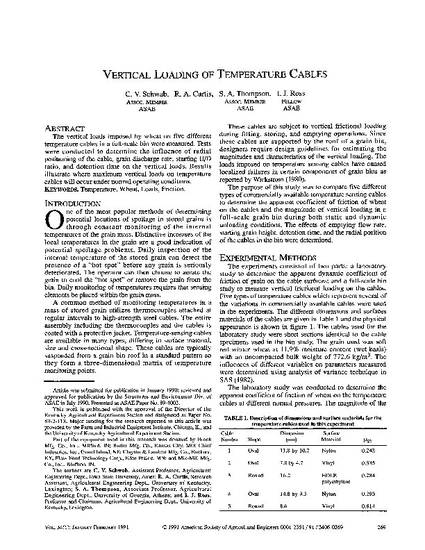
One of the most popular methods of determining potential locations of spoilage in stored grains is through constant monitoring of the internal temperatures of the grain mass. Distinctive increases of the local temperatures in the grain are a good indication of potential spoilage problems. Daily inspection of the internal temperature of the stored grain can detect the presence of a "hot spot" before any grain is seriously deteriorated. The operator can then choose to aerate the grain to cool the "hot spot" or remove the grain from the bin. Daily monitoring of temperatures requires that sensing elements be placed within the grain mass. A common method of monitoring temperatures in a mass of stored grain utilizes thermocouples attached at regular intervals to high-strength steel cables. The entire assembly including the thermocouples and the cables is coated with a protective jacket. Temperature-sensing cables are available in many types, differing in surface material, size and cross-sectional shape. These cables are typically suspended from a grain bin roof in a standard pattern so they form a three-dimensional matrix of temperature monitoring points.
Available at: http://works.bepress.com/charles_schwab/54/

This article is from Transactions of the ASAE 34, no. 1 (1991): 269–274.